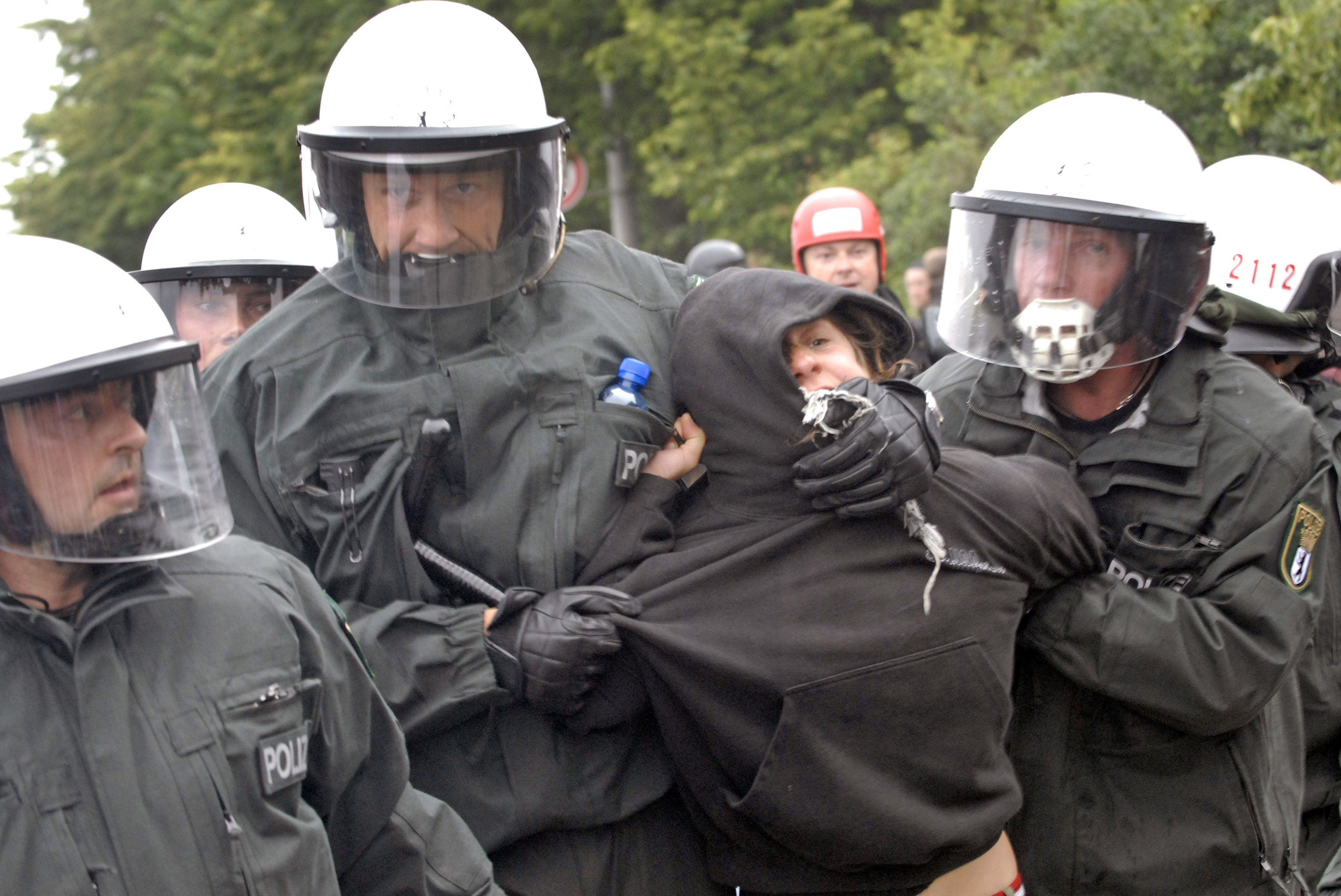With the gruesome beheadings of journalists in the Middle East, an ugly truth is now common knowledge — being a reporter can be deadly.
In 2014, there were 69 journalists killed under circumstances in which it was "clearly established that the victim was killed because of his/her activities as a journalist," according to Reporters without Borders. In 2013, 79 journalists were killed. This year, 13 more have already been murdered, the organization said.
But violence against journalists is not limited to conflict zones. In some of the most progressive nations, journalists and others working to raise awareness of environmental degradation and corporate malfeasance are being beaten and incarcerated.
Last spring, Article 19, a London-based human rights charity, released a report that documents abuse of Environmental Human Rights Defenders (EHRDs) in some of the world's most developed nations.
"Environmental activists and journalists across Europe and Central Asia face severe challenges in their efforts to promote both the access and dissemination of environmental information and public discussion of environmental issues," said the report, "A Dangerous Shade of Green: Threats to Environmental Human Rights Defenders and Journalists in Europe."
"Even in long-standing democracies, including the United Kingdom and the Netherlands, unlawful techniques are used against those who speak out about environmental hazards. The challenges that Environmental Human Rights Defenders face are varied, ranging from physical attacks to unlawful surveillance," the authors wrote.
The report is a disturbing indictment of how discussion, debate, protest and the sharing of information — all fundamental to a healthy democracy — are under attack, not just in the developing world, but worldwide.
Article 19 was established in 1987 and has regional offices in Bangladesh, Brazil, Kenya, Mexico, Myanmar, Senegal and Tunisia. Its mission is "to promote, protect, develop and fulfill freedom of expression and the free flow of information and ideas in order to strengthen global social justice and empower people to make autonomous choices."
The name of the organization comes from Article 19 of the Universal Declaration on Human Rights, which states that "everyone has the right to freedom of opinion and expression; this right includes freedom to hold opinions without interference and to seek, receive, and impart information and ideas through any media and regardless of frontiers."
The Article 19 report grabbed my attention because I have close friends and colleagues working as journalists and activists in the field, literally and figuratively, risking their lives to protect our environment. I was also very pleased to see that the report was co-produced with the Center for Applied Human Rights at Vermont Law School, in South Royalton, Vermont, my alma mater. This I learned from the school's alumni magazine, Loquitur.
Loquitur reported that Stephanie Farrior, professor of law and director of the Center for Applied Human Rights, and two of her students, Sonum Nerurkar and Sarah Truckle, worked on the report.
Being a great believer in practical experience for law students, I wanted to hear from Nerurkar and Truckle directly. I didn't know Farrior but the law school has a close and supportive community, so I wrote to ask her if she could put me in touch. Two days later, I received a warm reply, including phrases in perfect Japanese. It turns out Farrior attended the Nishimachi International School in Tokyo for five years as a child. Since then, she has lived and worked worldwide, taught law at several top U.S. law schools, and worked as the legal director of Amnesty International. She is now on leave from the Vermont Law School as a visiting fellow at Oxford University, researching legal issues in the linkages between human rights and environmental protection. I contacted Nerurkar and Truckle, who were glad to talk about their work and the threats EHRDs face. Both graduated from Vermont Law School last year, Nerurkar with a master's degree in environmental policy and law (MELP) and Truckle with a degree of Juris Doctor and a MELP.
Before the project began, both women had researched environmental and human rights issues. Nevertheless, neither was prepared for what they discovered.
"I think we often assume that human rights violations only happen in a very specific environment — where laws are more lax and there is visible corruption in the government. I was quite surprised that this assumption changed through my research. I was also shocked that these governments were so concerned with environmental activists, so concerned that they would persecute or use excessive force with these individuals," Nerurkar said.
Truckle, too, was surprised by what they found. "I expected to see a lot of violations in Eastern Europe and less in the West. I also anticipated seeing stronger environmental advocacy by both companies and individuals in Europe. I had thought that safety and environmental preservation would be of the utmost importance and expected to find few violations," she said.
However, that was not the case. Again and again, the two researchers were amazed to find that governments willingly participated in violence against EHRDs.
"I was particularly disturbed by the number of violations and the extent of violence, particularly by police and governments. I anticipated violations by corporations, but I was not prepared for the governmental allegations that came to light," Truckle said. "This fact raises the important point that countries can do something about the violations and can be better held accountable under international law and other legal mechanisms."
I asked the two whether their research had changed their perceptions and understanding of environmental activism and journalism. "The only really drastic change in my perception was the realization of how dangerous environmental activism, particularly by the media, can be," Truckle said. "While this was greater in non-European countries, it was still prevalent in Europe and alarming that people still have to be fearful for exposing crimes and violations of both environmental and human rights law."
For Nerurkar, the Article 19 experience was formative. "I really admire Article 19 and the work they are doing, so to be a part of it has really affected me," she said. "This opportunity has solidified my passion for working on issues that lie at the interface between human rights and the environment. With environmental issues coming to the forefront in politics around the world, it is important we recognize the need to protect EHRDs. I hope that this paper can shed light on what is happening in these countries, help those that are being persecuted and prevent this excessive force in the future."
Both women are especially concerned that what they found is known to so few.
"People do not realize that globally individuals are being killed for protecting their land, publishing incidents, and protecting the environment and natural resources," Truckle said. "Every person who reads this paper will be better informed, and the more people that know, the bigger difference we can all make."
Article 19's "A Deadly Shade of Green" can be found at bit.ly/1mAO4Cm. Stephen Hesse is a professor in the Law Faculty of Chuo University.
Notice: Stephen Hesse’s Our Planet Earth column will no longer appear in print. See www.japantimes.co.jp/life_column/our-planet-earth for archived columns. Mr. Hesse can be reached by email at [email protected].



















With your current subscription plan you can comment on stories. However, before writing your first comment, please create a display name in the Profile section of your subscriber account page.